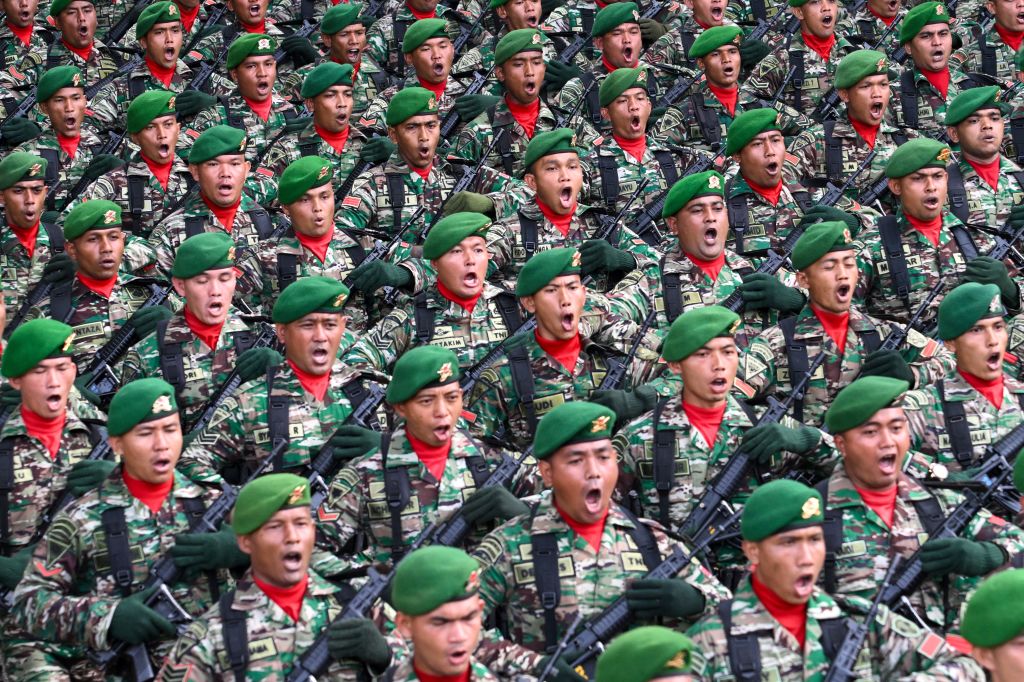This is not the time for increasing Indonesia’s defence spending

Indonesia could do without an increase in military spending that the Ministry of Defence is proposing. The country has more pressing issues, including public welfare and human rights. Moreover, the transparency and accountability to justify such a plan is also questionable.
The ministry proposed in January that defence spending should rise gradually to 1.5 percent of GDP by some unstated target year. The ratio has been 0.6 to 0.7 percent of GDP for the past decade, lower than that of many Southeast Asian neighbours and Indo-Pacific countries, including Japan, South Korea and India.
An increase to 1.5 percent would be subject to parliamentary approval. It could indeed significantly enhance Indonesia’s defence capabilities—for example, by modernising equipment, lifting research and development and improving welfare for military personnel.
With the extra money, Indonesia could prioritise key acquisitions such as radars, early warning aircraft, fighter jets, submarines and rescue submarines. The government could give military personnel higher performance allowances—bonuses that apply across the state sector and constitute large portions of employees’ remuneration. The armed forces’ allowance of 70 percent is low. Increasing it would help address longstanding concerns about the adequacy of military compensation.
Furthermore, Indonesia must enhance its defence capabilities given its strategic position overseeing four choke points, and concerns over airspace intrusions and maritime law violations. The current unstable geopolitical situation, especially in the South China Sea and around Taiwan, demands stronger defence.
However, such an increase must be handled transparently, accountably and with meaningful public participation, especially with 306 trillion rupiah (roughly A$35 billion) in budget cuts in other sectors. Indonesia has the democratic tools for proper oversight, but in practice the government and parliament do not attend closely to how the armed forces spend their money.
Moreover, this is the wrong time economically for increasing defence spending. The country is close to deflation and the danger to economic growth that it would bring. Prabowo is meanwhile slashing budgets for essential government activities such as healthcare, elementary and higher education, public works and infrastructure projects. Those are better places to spend any extra money that could be allocated to defence.
It isn’t at all clear that more military funding would be well spent. Indonesia lacks clear direction in defence policy. The government has yet to present a concrete plan following the failure of the Minimum Essential Force program, which concluded in 2024 with only 65 percent of the target assessed as achieved. Prabowo’s replacement program is Optimum Essential Force, but no concrete details have been announced. The public is increasingly sceptical of the administration’s ability to define a coherent defence policy.
The Indonesian Defence White Paper is outdated, being last revised in 2015. The global and regional security environment has evolved dramatically, and neighbouring countries—such as Vietnam, Malaysia and Cambodia—have updated their defence policies in that time. Cambodia, for instance, released its National Defence Policy in 2022 and its first Defence Strategic Update at the end of 2024, outlining Cambodia’s priorities such as border security, international peacekeeping and long-term reforms for its armed forces. In contrast, Indonesia appears to be lagging in addressing evolving security threats.
Indonesians have even more reason to be sceptical of rises in the defence budget as controversial military policy initiatives spark concerns about potential threats to democracy and seem to impede advancement of security sector reforms and professionalisation of the military. These include deeper influence down to the level of villages, helping with what should be a purely civil program to provide free nutritious meals, and assigning high-ranking active military officers to civilian roles. Revisions to the law governing the armed forces have added the growing suspicion about the military’s increasing role in civilian governance.
Altogether, this does not look like a good time to plan for more than doubling the armed force’s share of the national economy.









